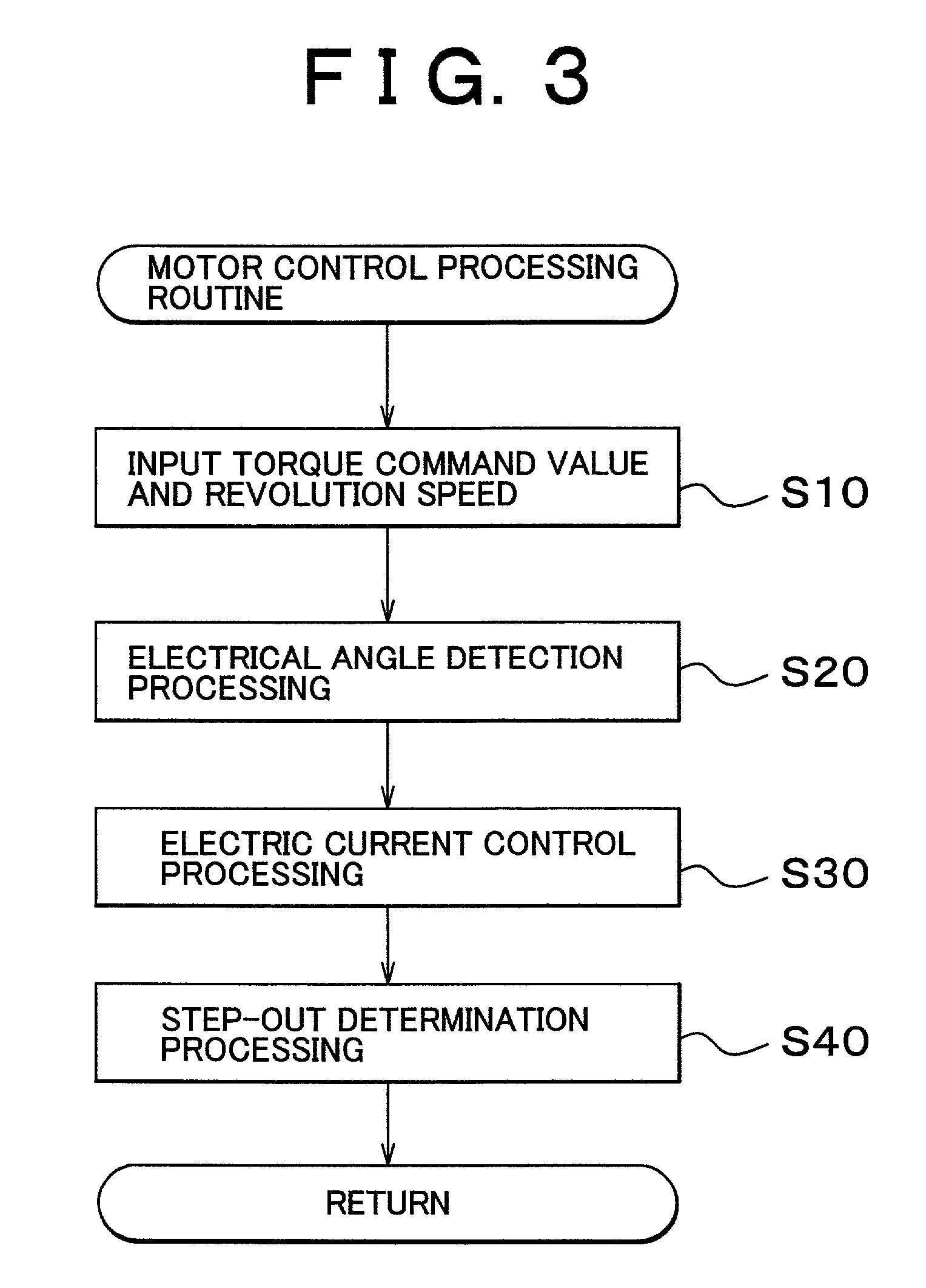Device and method for determining step-out of synchronous motor
a synchronous motor and step-out detection technology, applied in the direction of motor/generator/converter stopper, electronic commutator, dynamo-electric converter control, etc., can solve the problem of inability to accurately detect step-out, inability to obtain desired torque by synchronous motor, and inability to achieve accurate measurement and measurement, etc. problem, to achieve the effect of accurate implementation and excessive load
- Summary
- Abstract
- Description
- Claims
- Application Information
AI Technical Summary
Benefits of technology
Problems solved by technology
Method used
Image
Examples
first embodiment
[0040] F: Modified example of the first embodiment;
second embodiment
[0041] G: Second embodiment; and
[0042] H: Modified example of the second embodiment.
[0043] A: Configuration of the Unit;
[0044] FIG. 1 is an explanatory drawing showing a schematic configuration of a motor control unit 10 as an embodiment. A step-out detection device uses hardware of the motor control unit 10 and is configured as a function of the motor control unit. Various synchronous motors are applicable to a motor 40, which is the subject of control. In this embodiment, a three-phase synchronous motor of a salient pole type with permanent magnet attached to a rotor is used. The motor control unit 10 controls the operation of the motor 40 by controlling the electric current that flows through U, V, and W phases thereof from a battery 132, a power source, by switching a transistor inverter 130. In the control of this embodiment, a sensor for detecting an electrical angle of the rotor is not provided, but instead, the electrical angle is calculated without a sensor.
[0045] The motor...
PUM
 Login to View More
Login to View More Abstract
Description
Claims
Application Information
 Login to View More
Login to View More - R&D
- Intellectual Property
- Life Sciences
- Materials
- Tech Scout
- Unparalleled Data Quality
- Higher Quality Content
- 60% Fewer Hallucinations
Browse by: Latest US Patents, China's latest patents, Technical Efficacy Thesaurus, Application Domain, Technology Topic, Popular Technical Reports.
© 2025 PatSnap. All rights reserved.Legal|Privacy policy|Modern Slavery Act Transparency Statement|Sitemap|About US| Contact US: help@patsnap.com



